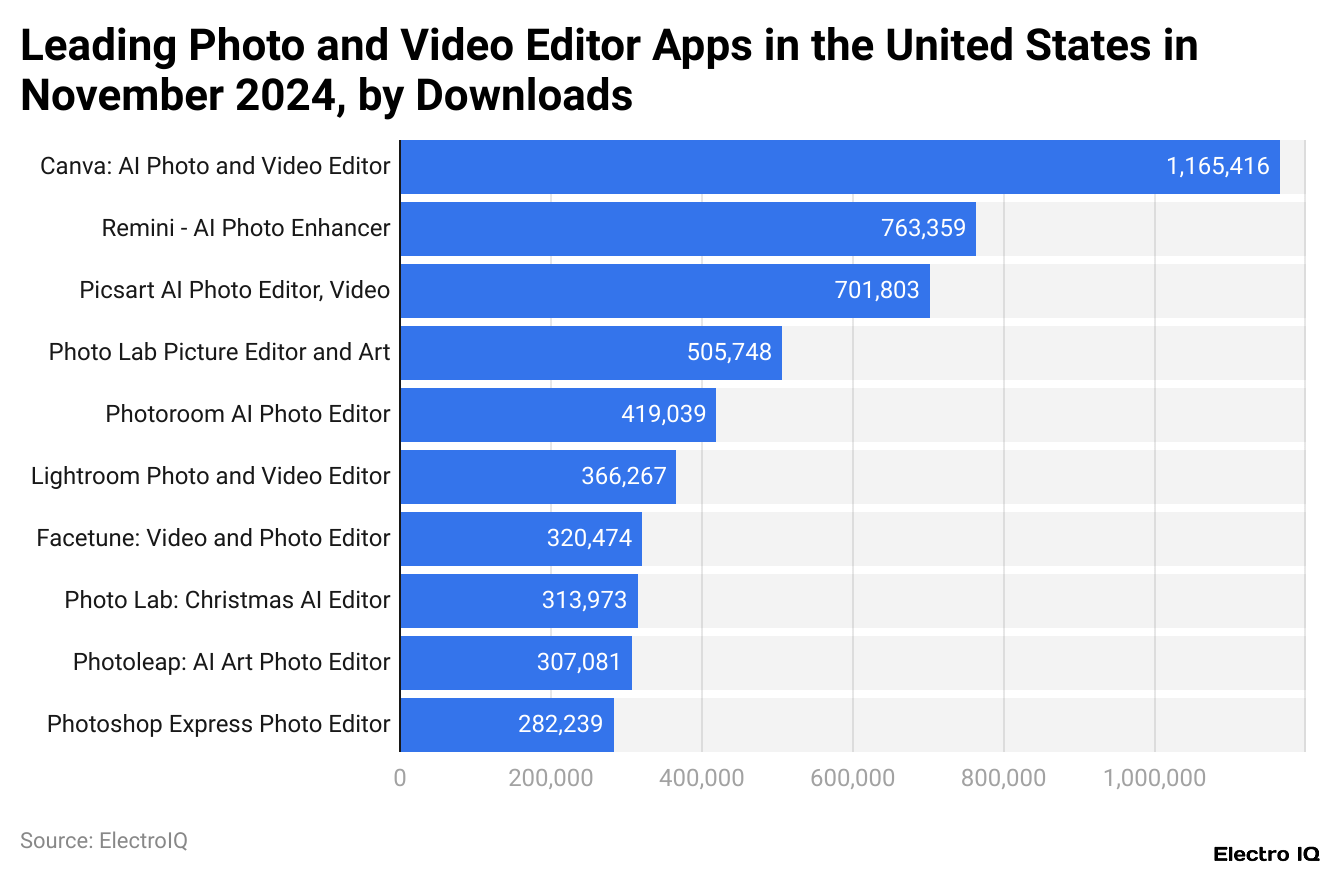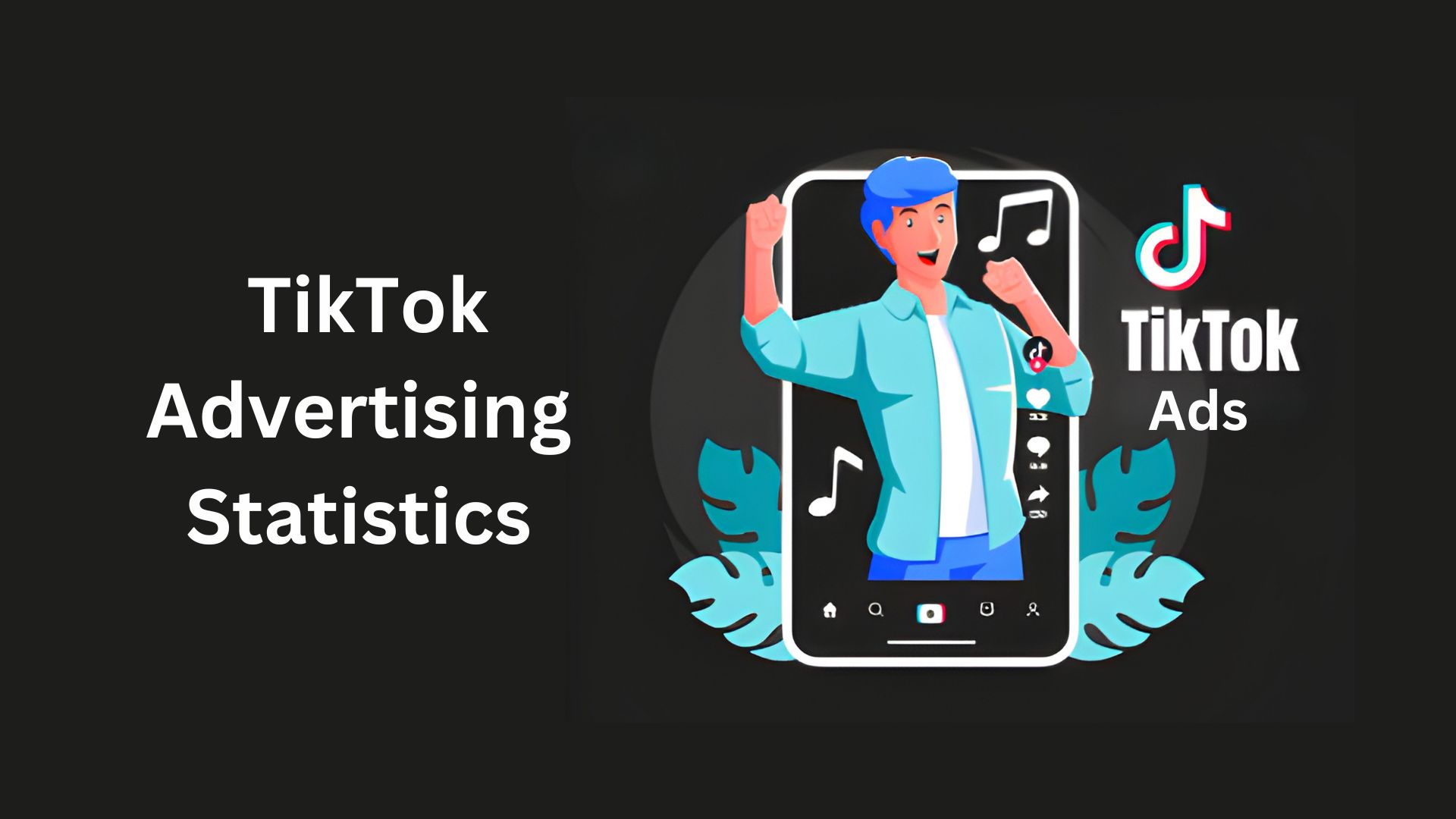Video Editing Statistics And Facts By Market Share, Software, Demographics, And Trends (2025)
Updated · Sep 01, 2025

Table of Contents
- Introduction
- Editor’s Choice
- Leading Photo and Video Editor Apps By Downloads
- Video Editing And Video Content Statistics
- How Much Do Video Editors Make?
- Experience And Earnings Growth
- Skills Have Pay-Boosting Attributes
- Salaries And Industry Differences
- Video Editing Software Brand Market Share
- AI In Video Editing Statistics
- Video Editing Demographics
- Conclusion
Introduction
Video Editing Statistics: In 2024, video editing ceased to be an artisan task purely undertaken by professionals and moved on to become a common activity for social creators, businesses, educators, and amateurs alike. With the exponential growth in online content and the availability of editing tools, video editing has become an essential skill. In this text, we dive a little into the 2024 numbers, including aspects like industry size, user numbers, software market shares, along the impacts of AI and mobile editing. You’ll see video editing statistics, growth rates, and dollar figures with easy-to-understand explanations.
Editor’s Choice
- In November 2024, Canva was installed 1.16 million-plus times and thus claimed the number-one spot among photo editing apps in the United States. It was followed by Remini (763K) and Picsart (702K).
- Premium video editing software users will peak at 48.22 million in 2025.
- 85% of companies consider video as a key marketing tool; video posts tend to receive 48% more hits than posts without videos.
- The demand for professional editing tools is driven by the valuation of the global video streaming market at US$224.13 billion in 2024.
- By 2025, mobile is anticipated to generate upwards of 75% of all video views, with approximately 80% of online content being short-form video.
- User-generated content will account for 50% of all online video views by 2025.
- By 2025, companies are expected to spend US$20K yearly on video marketing.
- A compelling 96% of consumers watch videos before buying, and 92% of those businesses that leverage video marketing say they get a strong ROI.
- US video editor salaries range from US$51K to US$73K on average, with top earners going beyond the US$100K mark depending on experience, skills, and industry.
- Adobe Premiere Pro stands at 35%, followed by Final Cut Pro X with 25% and DaVinci Resolve with 15% in terms of software market share.
- The video editing AI sector is growing at an annual rate of 17.2% and is expected to hit US$4.4 billion by 2033, with cloud deployment leading at 72.8%.
- There remain well over 32,500 video editors in the U.S.; 24.1% are female, with the average age being 37, and New York is the highest in demand.
Leading Photo and Video Editor Apps By Downloads

(Reference: statista.com)
- Canva, a well-known photo editing app, achieved a milestone of more than 1.16 million downloads in the United States across both Google Play Store and Apple App Store in November 2024.
- The second most downloaded app was Remini, by Italian company Bending Spoons, with roughly 763,000 installs.
- With almost 702,000 downloads, Picsart from Florida ranked third. Between the end of 2023.
- In early 2024, there was a trend among photo and video editors in the United States to introduce new AI features that would enhance their tools and simplify editing for users.
Video Editing And Video Content Statistics
#1. Growing Number of Paid Users
- By 2025, the number of premium or paid software users in video editing may reach 48.22 million.
- This steady growth stems from the rising production of video content, both by individuals and by businesses, and hence signals a strong ongoing demand.
#2. Cloud Solutions Taking the Top Spot
- With the Cloud editor solution so rightly carrying the brunt of visibility through to the tone of convenience on a click, across teams and agile collaboration through remote projects, 2024 is all set to capture a bigger share.
#3. Video as Marketing
- About 85% of businesses currently utilise video as a central marketing tool to engage audiences, and this %age shall continue to rise, as more marketers see the value of video in their campaigns.
#4. Social Media: Catalyst for Video Demand
- Social media is still facilitating the consumption of videos.
- Free video posts garner 48% more views compared to those with no video, which implies that video really pumps up visibility and engagement with online users.
#5. Increase in the Video Streaming Market
- The world video streaming market is projected to reach US$224.13 billion in 2024, and with it, further growth is expected.
- The growing popularity of streaming services is pushing the demand for professional video editors to produce good-quality content.
#6. Growth in Mobile Video Consumption
- Mobile devices will account for more than 75% of all video views by the year 2025.
- Consequently, this trend makes mobile formats the top priority for video editors.
#7. Popularity of Short-Form Videos
- Short-form videos (less than a minute long) are expected to be about 80% of all online video content by the year 2025.
- Platforms like TikTok and Instagram Reels are setting this trend, demanding that editors focus on short, impactful storytelling.
#8. Growth in User-Generated Video Content
- 50% of all video content viewed online will be user-generated content by 2025.
- This showcases the need for easy-to-use editing tools for non-professionals.
#9. Video Production Investment
- By 2025, businesses will be spending US$20,000 annually on video marketing.
- The fact that they are spending this much shows that high-end video production has truly become an essential working tool in marketing.
#10. Global Enlargement of the Video Audience
- The year 2022 saw online video content being watched by 3.48 billion people, with live video viewed by 164.6 million in the U.S. alone.
- This humongous audience creates huge opportunities for video marketers to target global consumers.
#11. Video Impact in Consumer Decisions
- An unbelievably large number, 96%, of consumers view videos before choosing to buy a product or service.
- Brands using high-quality video content enjoy better engagement and conversion.
#12. Ready Satisfaction for Video Marketing
- About 92% of companies using video editing software state satisfaction with their social media marketing ROI.
- This higher satisfaction stems from the video’s proven ability to increase engagement and conversions.
#13. Mobile Video Viewing Trend
- Almost 70% of U.S. viewers of digital video content like watching it on smartphones, whereas 59% like it best on smart TVs.
- This trend for mobile-first viewing consequently influences video-making and editing.
#14. Video Marketing Investment Growth
- Advertisers in the U.S. doubled their spending on video ads, getting to US$52.1 billion from 2020.
- Such a quick rise in expenditure mirrors the growing confidence in the worth of video for marketing and advertising.
How Much Do Video Editors Make?
- In terms of annual salary, the pay can vary greatly within the United States for video editors, with several factors coming into play: experience, skill level, educational background, and location.
- Data from some sites listing jobs and providing salary information as of May 2025 show that the average pay for video editors will range anywhere between US$51,131 and US$73,401.
- More specifically, Zippia gives the lowest figure at US$51,131, and Payscale comes next, showing it at US$57,439.
- As per Glassdoor sets it at US$63,748, ZipRecruiter follows with US$65,728, the U.S.
- The Bureau of Labour Statistics (BLS) ranks it at US$70,570, and Indeed says the highest is at US$73,590.
Impact of Education on Salary
- According to Zippia, video editing statistics show that video editors with a bachelor’s degree make an average of US$54,046 annually, as compared to an associate degree-holder making about US$49,756.
- Most professionals in this field, approximately 73%, have a bachelor’s degree, generally in a related field such as photography, digital media, journalism, or communication.
Experience And Earnings Growth
- The Glassdoor May 2025 data reveal that an editor with 0-1 year of experience in an entry-level position earns an annual salary of US$41,000-US$65,000.
- Upon acquisition of 1-3 years of experience, salary increases from US$44,000 to US$72,000, while for 4-6 years of work they are between US$47,000 and US$79,000; 7-9 years work acquired remuneration in the range of US$51,000 to US$87,000; between US$54,000 and US$95,000 for 10-14 years.
- Meanwhile, salaries for highly experienced editors aged 15+ years vary from US$60,000 to US$106,000 annually.
- This kind of work also provides opportunities for portfolio-building and enhancing experience in freelance or remote project engagements and contract work.
Skills Have Pay-Boosting Attributes
- Specialised skills can greatly increase a video editor’s earning capacity.
- Payscale reports that, in May 2025, video editors with Adobe Photoshop skills earn US$55,160 on average, while those proficient in Adobe After Effects go for about US$58,655, and those venerated for Adobe Premiere command US$57,257.
- Skills and Competence in Programming so far in Motion Graphics, Color Correction, and Special Effects Lead to Higher Market Value.
Salaries And Industry Differences
- The industry where a video editor works can mark a heavy difference in the level of pay.
- According to Glassdoor data, jobs in government and public administration pay the highest at US$81,274, followed by information technology at US$72,701, telecommunications at US$71,590, personal consumer services at US$69,402, and arts, entertainment, and recreation at US$67,184.
Location And Salary Variations
- Location influences pay since the cities that have higher living costs are also stronger in media presence.
- According to Indeed, the best-paying cities for video editors are Chicago (US$113,573), New York (US$84,003), Los Angeles (US$63,744), Austin (US$62,827), Provo (US$61,490), Miami Beach (US$54,221), and Hollywood, FL (US$53,891).
Companies Offering the Max Salary
- The other factor that sets salaries apart is the size of the company and its industry focus.
- Big companies in, say, media and entertainment, tend to pay more.
- According to Glassdoor data from May 2025, the highest-paying companies include Alexion Pharmaceuticals (US$102,000-US$186,000), Merck (US$85,000-US$152,000), Organon (US$84,000-US$150,000), Coinbase (US$82,000-US$141,000), SoCalGas (US$81,000-US$134,000), and MathWorks (US$79,000-US$135,000).
| Brand |
Estimated Market Share
|
| Adobe Premiere Pro | 35% |
| Final Cut Pro X | 25% |
| DaVinci Resolve | 15% |
| Avid Media Composer | 10% |
| Filmora | 5% |
| CapCut | 4% |
| iMovie | 3% |
| Vegas Pro | 3% |
| CyberLink PowerDirector | 2% |
| Other (including smaller players & niche software) | 20% |
(Source: sendshort.ai)
- As per Send Short, video editing statistics state that the year 2024 is witnessing a rapid augmentation of the video editing software market on the grounds of increasing demands for HD videos, technological advancements, and a growing number of content creators.
- Holding the largest market share at 35%, Adobe Premiere Pro is favoured by many due to its professional tools and smooth integration with other Adobe products.
- Final Cut Pro X carries 25% in its share, being the second-most-popular software among Mac users due to its powerful and easy-to-use features.
- DaVinci Resolve, with 15%, is popular for color grading and has a strong free offering.
- With 10%, Avid Media Composer is still selected most by the film and TV industry due to the collaborative features it supports.
- Filmora, with 5% appeals to beginners and intermediate level users, whereas CapCut, with 4% is sharply rising among the mobile creators producing content for social media.
- iMovie and Vegas Pro secure 3% each, with iMovie being simpler and more Apple-friendly, and Vegas Pro offering a much wider array of editing features.
- PowerDirector by CyberLink commands just 2%, admired for being reasonably priced yet full of features.
- The concrete resting on 20%, however, belongs to the smaller brands that suit the particularities of a specific editing need.
AI In Video Editing Statistics
- The global market of AI in video editing is expected to grow towering, being estimated at around US$4.4 billion by 2033, up from US$0.9 billion in 2023, indicating that the CAGR will be 17.2% during 2024-2033.
- In 2023, the software segment accounted for the largest market share according to components, with 70.5%.
- Standing second with the popularity of accessibility and collaboration were the cloud-based deployment solutions, holding 72.8% market share.
- Enterprise users constituted the largest user base with 67.4% market share.
- Region-wise, North America dominated the market in 2023 with a 35.9% market share, with approximate revenues of US$0.32 billion from AI-powered video editing solutions.
Video Editing Demographics
- According to analyses by Zippia, video editing statistics indicate that over 30 million profiles, with data verified from the BLS, the U.S. Census, and present job listings, there are more than 32,533 video editors working in the United States.
- From this group, 24.1% are women and 75.9% men, with an average age of 37.
- Most video editors are White (62.6%), followed by Hispanic or Latino (18.1%), Asian (7.1%), and Black or African American (6.7%). The highest demand for video editors is in New York, NY, and the best pay for the profession comes from the technology sector.
- San Francisco takes the top spot for pay, with a mean annual income of US$68,008.
- Women in this profession made 101% of what men made in 2022, and about 10% of video editors declare themselves LGBT.
- New York ranks as the best state for video editors to live in, and video editors are 71% more likely to work for private companies as opposed to public ones.
Conclusion
Video Editing Statistics: In 2024, video editing sits at the cutting edge of creativity, technology, and business. Propelled along by increasing video consumption around the world, AI-driven tools, mobile-first strategies, and short-form content dominance. Making videos in marketing is generously funded by businesses, while the cloud-based and AI-driven platforms have turned editing into an accessible affair for the masses. Salaries for professional editors remain competitive, with location, industry, and expertise considerations shaping their earnings. As a universal language of engagement, the importance of video editing, professional or amateur, is slowly gaining prominence in shaping the future of online communication.
Sources
FAQ.
The video editing software market is fast-growing in 2024, driven by immense demand for quality video content, AI incorporation, and mobile-centred tools. Adobe Premiere Pro leads with 35 % market share, followed by Final Cut Pro X with 25 %, and DaVinci Resolve with 15 %.
The AI is transforming video editing by automating processes considered tiresome, building efficiency, and enabling high-end features. Valued US$0.9 billion in 2023, the AI in video editing market is projected to grow to US$4.4 billion by 2033, at a CAGR of 17.2%.
85% of businesses view video as a core marketing tool, which offers more engagement than static content. Posts with video have 48 % more views, and 96 % of consumers said that they watch videos prior to making purchases. Then, 92 % of businesses using videos are satisfied with the ROI of their marketing. By 2025, any given company is anticipated to spend US$20,000 every year on video marketing.
In May 2025, video editors in the U.S. earned between US$51,131 and US$73,590 annually on average, with best-paying brackets exceeding US$100,000. Paying capacity differs greatly with experience, skills, location and industry. Government jobs are the highest-paying ones (US$81,274 average pay), followed by IT and telecommunications.
The U.S. has over 32,500 video editors, with an average age of 37. Men constitute 75.9% of the workforce, and female representation is 24.1%. Ethnically, 62.6% are White, 18.1% Hispanic or Latino, 7.1% Asian, and 6.7% Black or African American. It is an industry-wise gender pay equity, with women earning 101% of what men earn in 2022.

I hold an MBA in Finance and Marketing, bringing a unique blend of business acumen and creative communication skills. With experience as a content in crafting statistical and research-backed content across multiple domains, including education, technology, product reviews, and company website analytics, I specialize in producing engaging, informative, and SEO-optimized content tailored to diverse audiences. My work bridges technical accuracy with compelling storytelling, helping brands educate, inform, and connect with their target markets.










